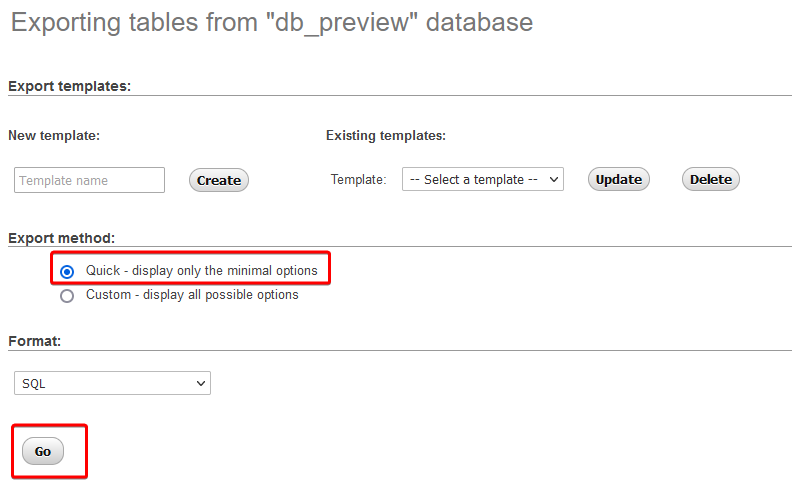There are multiple ways to create a full backup of your website’s database for safekeeping or for importing into a local environment for development. If you are looking to do a two-step export and import to a different website is recommended to use our automated Copy Database feature which greatly simplifies the process.
Table of contents
- Export Database using the Dashboard
- Export Database using phpMyAdmin (quick export)
- Export Database using phpMyAdmin (custom export)
Export Database using the Dashboard
You can easily create a full database backup of your website’s database by using the dedicated functionality provided in the Pressidium Dashboard. It will export all database objects into a single, self-contained file in SQL format (mysqldump compatible). The resulting file is compressed into a .zip archive. This is the recommended way, especially for large databases.
- Select the Websites menu option from the Dashboard sidebar.
- Click on your website’s name to go to the website overview (or navigate to your website via our Quick Search modal).
- Navigate to the Database tab, locate the MySQL Dump section and click Export.
- Provide (an optional) password to protect the resulting zip archive. The password will be required to open the downloaded zip archive.
- Click Export to start the export process. You can monitor the background job status by inspecting the Activity In Progress sidebar panel. When the process is finished you will receive a Dashboard notification and an email with a link to download the backup archive.
Export Database using phpMyAdmin (quick export)
For small databases, you can use phpMyAdmin to export your database.
- Select the Websites menu option from the Dashboard sidebar.
- Click on your website’s name to go to the website overview (or navigate to your website via our Quick Search modal).
- Navigate to the Database tab, locate the phpMyAdmin section and click Go to phpMyAdmin to open the management interface.

- Locate your database in the left-hand sidebar and select it (e.g the
previewdatabase in the example screenshot below). - Scroll down to the bottom of the page and select the “Check all” box (to select all tables for export), and then choose the Export option from the drop-down menu.
- At the new screen, press Go to start the export process and download a copy of your database in plain text SQL format.

Export Database using phpMyAdmin (custom export)
A custom export is recommended when you want to import the database backup to an already populated database, i.e. a database that contains existing tables and data. The initial steps are the same until the final export step.
- To choose a custom export select the Custom – display all possible options option to display an extended set of options.
- Scroll down to the Object creation options section and select
Add DROP TABLE / VIEW / PROCEDURE / FUNCTION / EVENT / TRIGGER statement.This will ensure that the backup contains proper statements to overwrite any existing tables or database objects of the same name. - Scroll down and press Go to start the export process.
NOT ANSWERED YOUR QUESTION? SEARCH AGAIN OR SUBMIT A SUPPORT REQUEST

